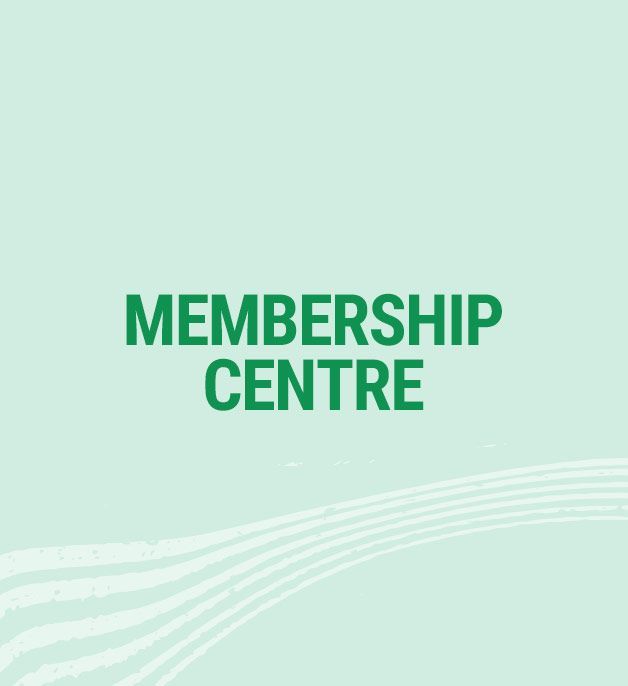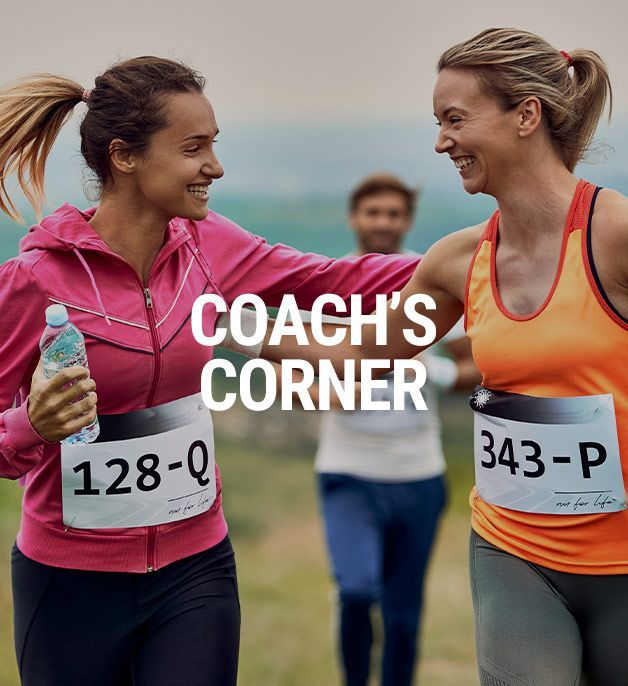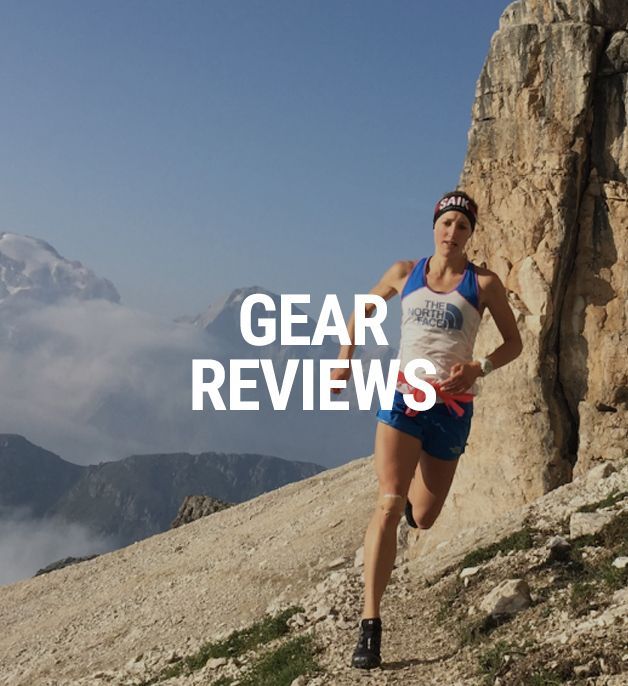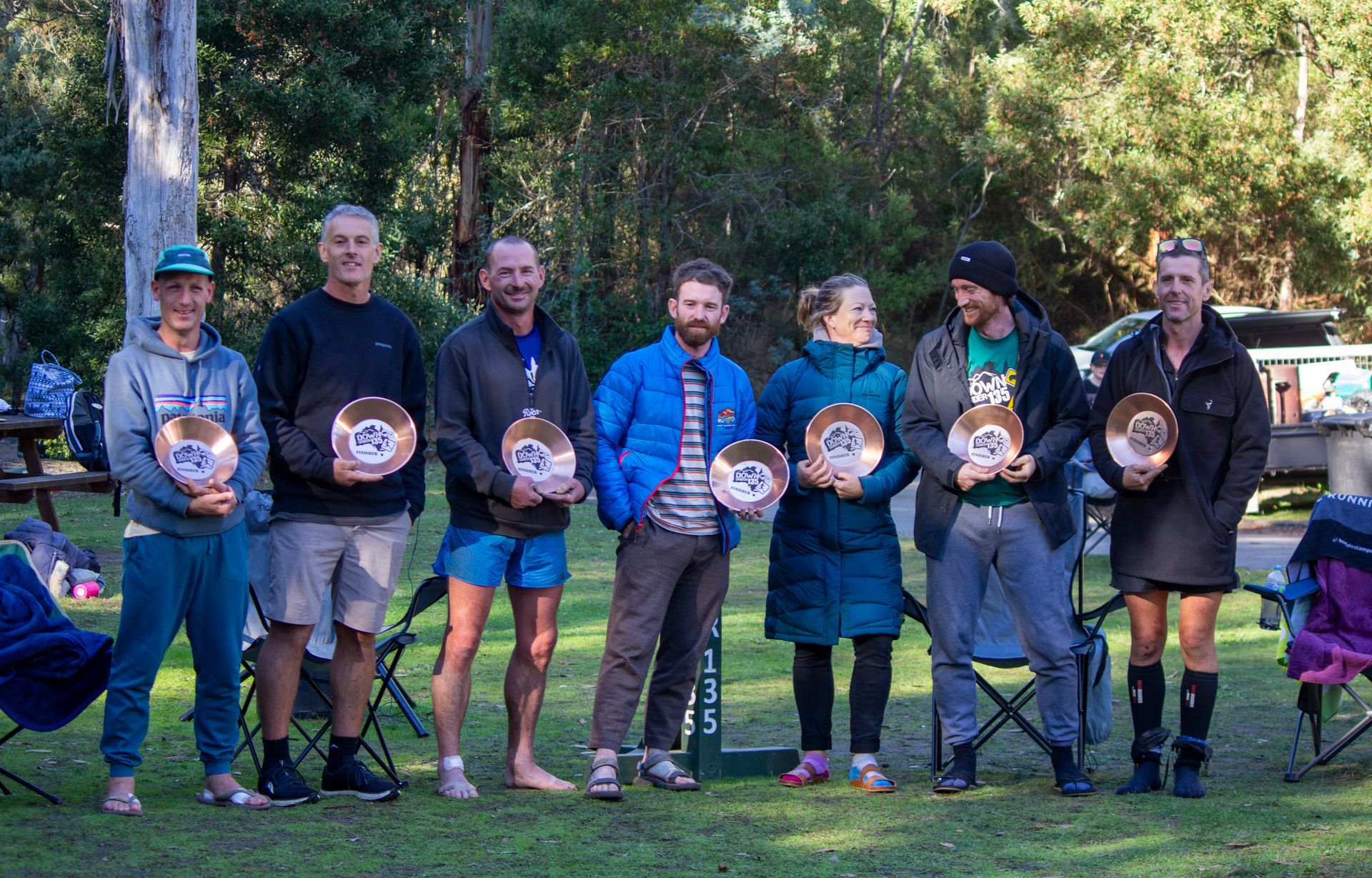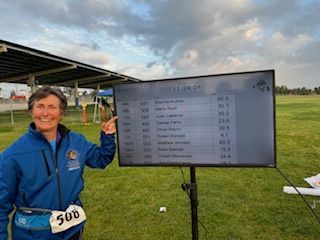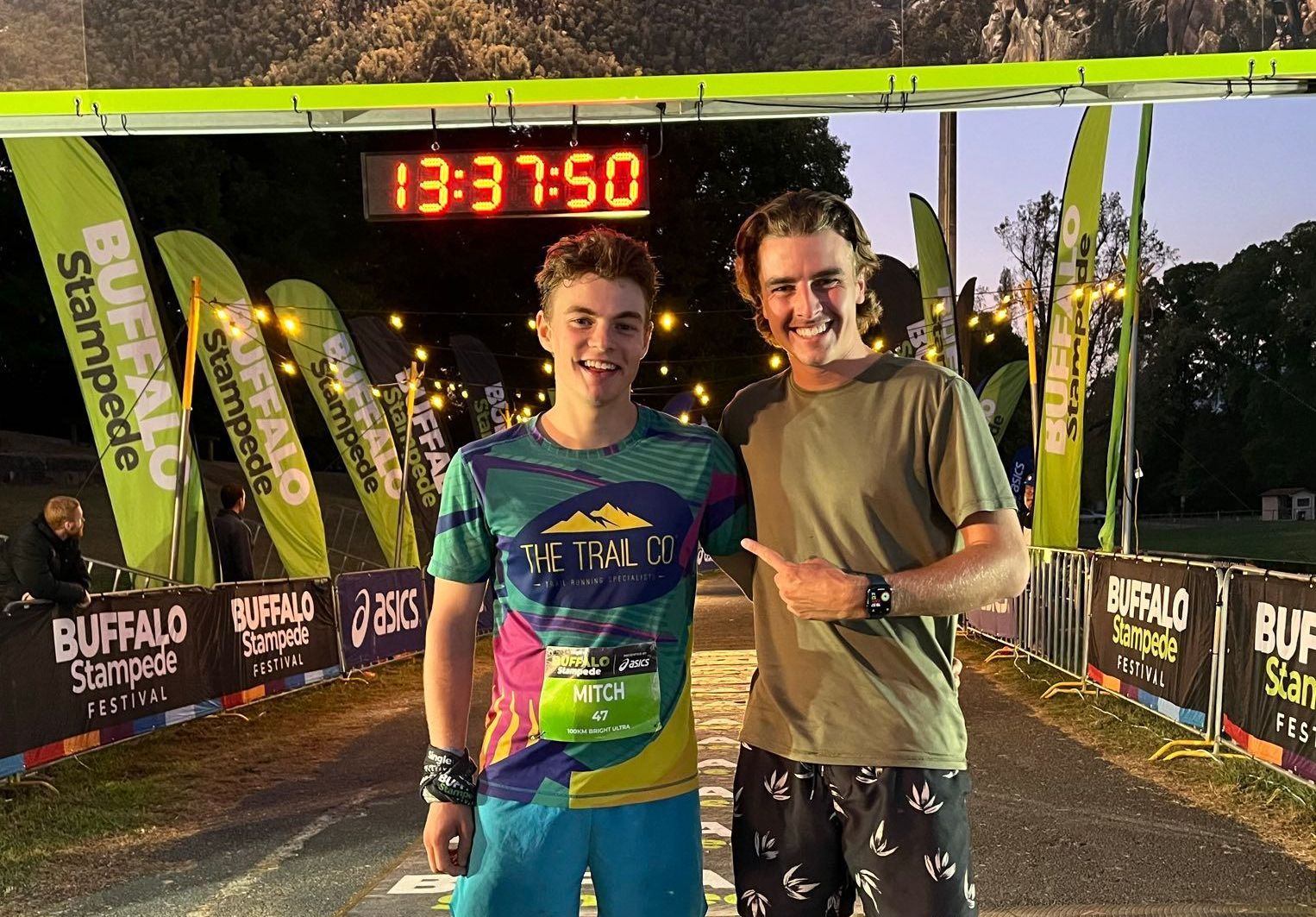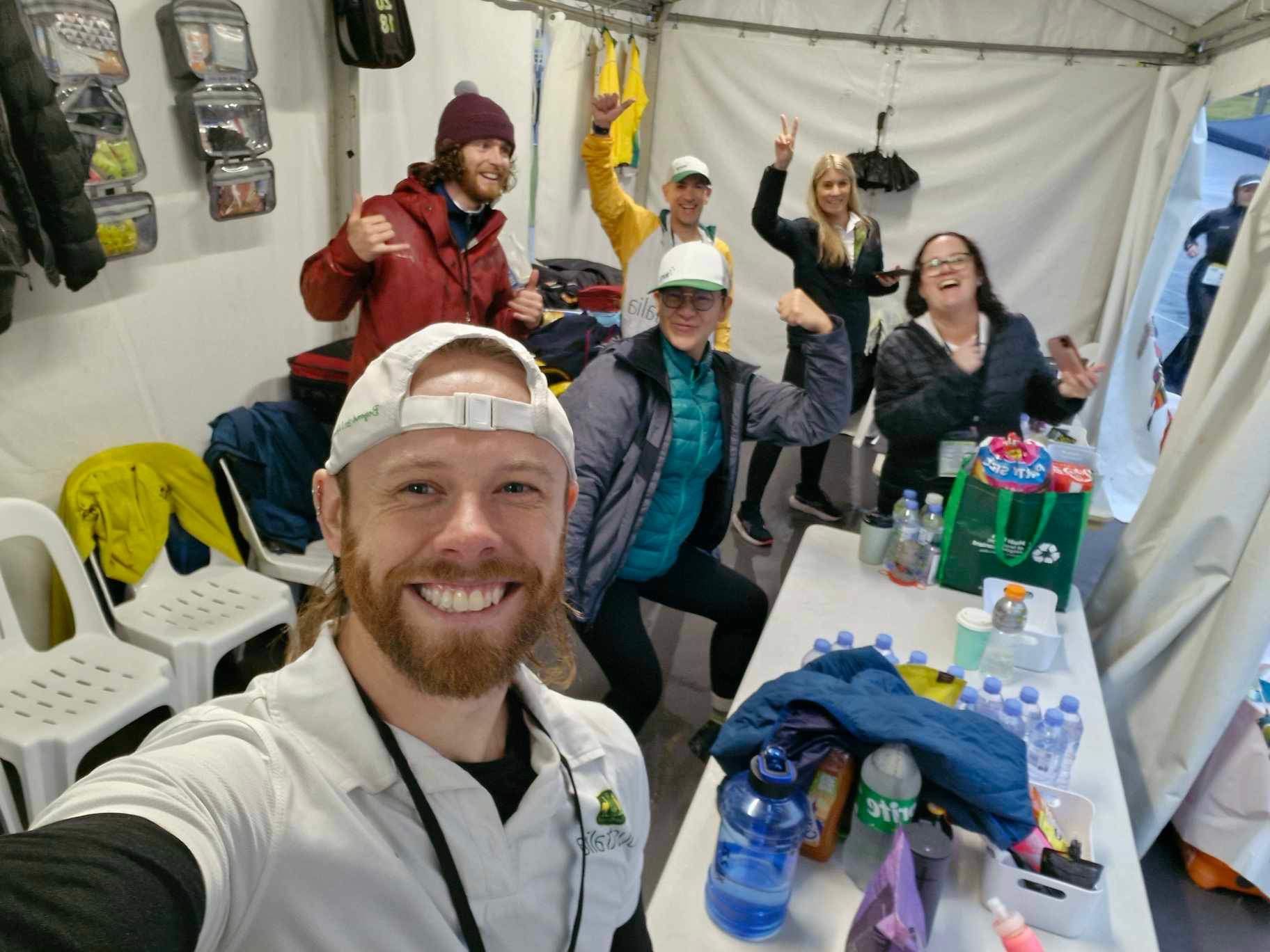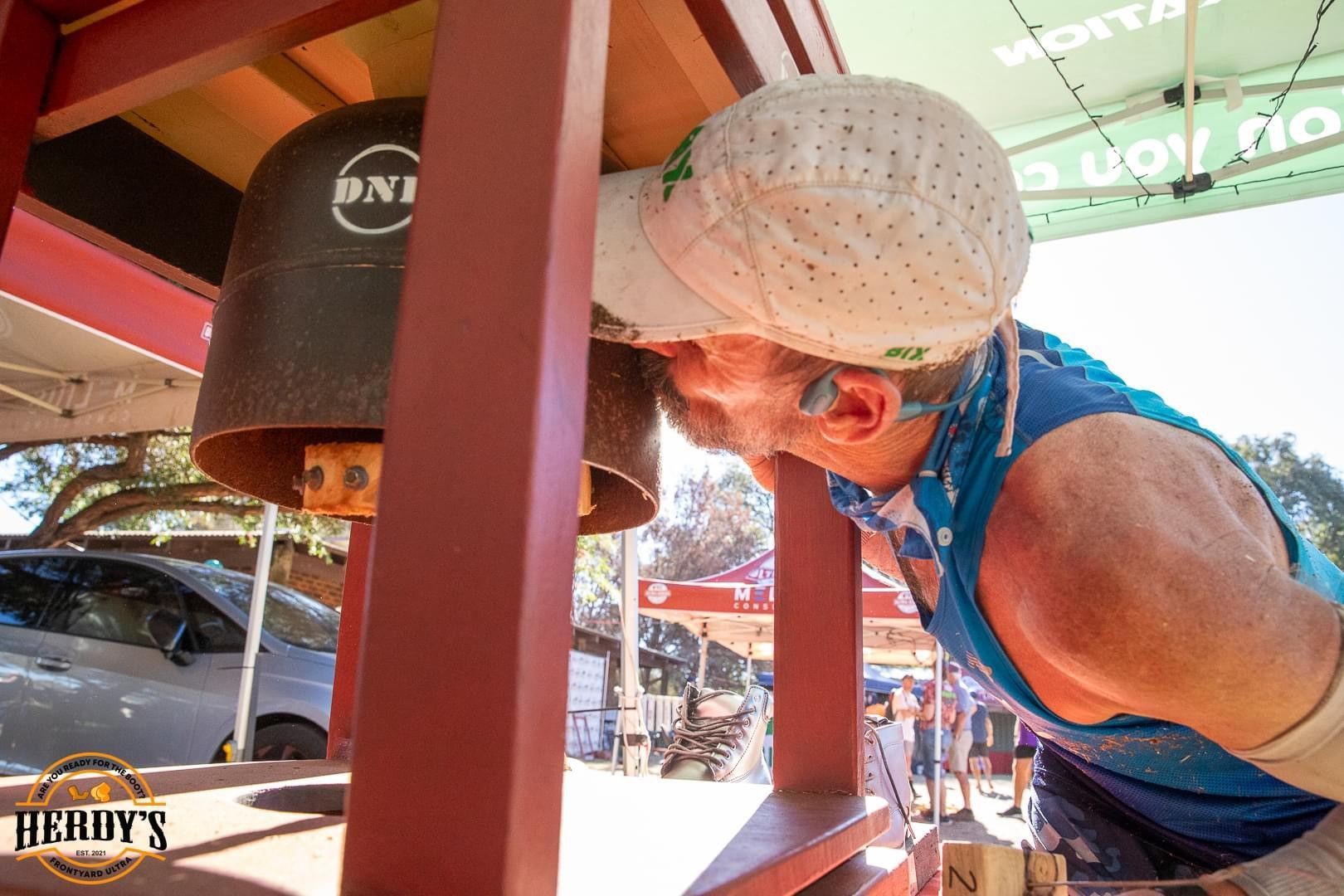
NEVER AGAIN…UNTIL NEXT TIME: GORE
Contributed by Phil Gore, AURA member (Darling Downs, WA)
AUSTRALIAN 24 HOUR TRACK INVITATIONAL, CANBERRA (ACT), 2-3 July, 2022
THE EVENT
The Australian 24 Hour Track Invitational is an ultramarathon held at the Athletics Stadium at the Australian Institute of Sport in Canberra. Competitors run on a 400m athletics track, where they see how far they can run in a 24 hour period. According to the website, ‘the event is strategically created with ideal conditions to provide 24 hour runners with a near perfect race for them to reach their full 24 hour distance potential.’ Ideal conditions being cold weather, low humidity, and a small field of runners to minimise congestion.
The track itself is a Mondo track, a trademarked synthetic surface used worldwide, which has been scientifically developed to be the best possible surface to enhance performance and decrease chance of injury in athletics events. It is perfectly flat and accurately measured. Obviously, there is no need for navigation, there are no sharp corners, or any inconsistencies under foot. Changing direction once every four hours was about as challenging as it got, and even then, there was a marshal to make sure you went the right way.
It’s an elite level event and so entry is by invitation or qualification only. I was first invited to this event last year after my 255km performance at the Lighthorse 24 Hour Ultra, however, due to COVID-19, the event was cancelled and my entry was rolled over to this year. Really wanting to test my potential over 24 hours, I made this race a focus of my training for the first half of 2022. This year they had also added an ‘open’ event, which would be held concurrently in lane 6.
THE LEAD UP
We flew into Canberra Thursday night and were welcomed with cold, wet weather. I had been preparing for that though. The first thing anyone says when you mention you are going to Canberra in July is something along the lines of, “ooh isn’t that going to be cold?”. In the six weeks or so leading up to the event I made an effort to acclimatise myself. I swapped out hot showers for cold ones, did most of my running at the coldest time of the day, and wore as few layers as possible while doing so – no jackets, buffs or gloves. It seemed to have made some difference, as I didn’t notice the cold too much upon arrival in Canberra.
We had arrived Thursday to allow for the whole day Friday to get ready. In hindsight, I would have liked to have got there an extra day early. One full day to get ready, and one full day to relax. Without a car and being in a new city, we found the shopping for supplies more stressful and time consuming than it should have been (we did attempt to organise an online delivery the night before, but they had no availability). Thankfully, our friends Sam and Luke, who had come from Sydney to help crew, arrived Friday afternoon and helped take a bit of the pressure off.
Together, we all went to the AIS for a crew meeting and to set up our crew tent. It was drizzling the whole time we were there (in fact, it had been drizzling the whole time since we arrived in Canberra) – conditions didn’t feel like they were going to be great for race day. I’m never one to shy away from running in the rain, but the prospect of 24 hours of it wasn’t ideal. My main concern was keeping my feet dry, as wet feet can cause huge problems down the track. I had plans to manage it, of course, with dozens of spare socks, 5 pairs of spare shoes, and a foot care routine, but it would chew up valuable time. It wasn’t something I was going to stress about too much though, as the weather is just one of those things we can’t control.
After finishing up our set up and spending some time meeting and chatting with some of the people I would be running with the next day, Sam and Luke drove us to the shops to pick up some last-minute supplies and get some dinner, before dropping us back at our accommodation. We still had a little bit of preparation to do, and we needed to have everything packed and ready to go for first thing in the morning. The plan was to have an early night and get as much of a sleep in as possible. It was around 9:30pm when my head finally hit the pillow, and just before I fell asleep, I noticed that the sound of rain on the roof had stopped. A good sign, I said to myself.
RACE DAY
Sam and Luke picked us up around 6:45am and we were at the AIS by 7am. We finished the last of our set up and I got myself dressed and ready to go. I had to collect a timing chip which would be worn on my ankle for the duration of the race. By about 7:30am it was time for the race briefing, and Sam and Luke had to disappear for a little bit to attend a parkrun, ticking off their final ACT parkrun event (before a new one would launch 2 weeks later).
Just before 8am, the seven of us in the Invitational race huddled around the 400m start in lane 1, whilst the five in the Open race were in lane 6. We started the race and I took off at an easy pace, much slower than my usual “comfortable” pace. It felt clunky at first, but I soon settled into a rhythm. Although it wasn’t raining, the track was still quite wet from all the rain the previous day. I had to dodge puddles to keep my shoes and socks dry. There were a few occasions early on when it felt like it might rain, but within a few hours, it cleared up and the track dried out. It looked like we might get lucky with the conditions.
The first nine hours, I had broken up into 3-hour blocks. At the end of each block, I would walk one lap whilst eating something substantial. For this first nine hours, I stuck to my plan pretty closely, maybe 2 or 3 seconds ahead of pace. I felt really good, really comfortable. I was completing each lap in about 2 minutes. If I needed something from my crew, I would ask them as I passed the tent, and then collect it 2 minutes later when I passed again. Sometimes it would take me 3 or 4 laps to get what I needed. As I passed the tent, unless they had their head sticking out waiting for me, I had enough time to say about 3 or 4 words. Sometimes it might take two or more passes to get a clear message across. However, with it being a 400m course, there was never too much time between seeing my crew. Even if it took a few passes to get my message across, it didn’t equate to a lot of time.
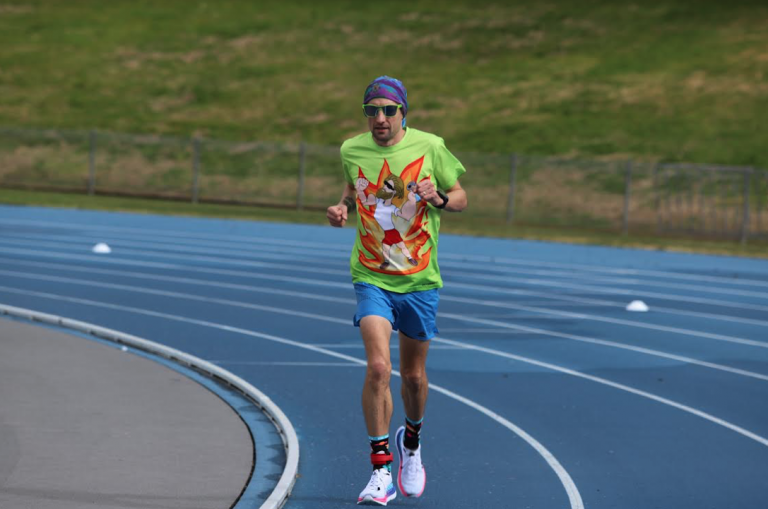
At the end of the nine hours, I was tracking really well, and still feeling strong. I had planned an eight minute stop, in case I needed the time to get changed, attend to blisters, etc. However, when I reached this point, everything was feeling good and didn’t need to stop. I used the time do a couple of extra laps instead (one running, one walking). I was 2km ahead of schedule and on track for my stretch goal of 270km. I knew it was early in the race though, so I tried not to get too ahead of myself. I kept reminding myself that the journey was the main goal, and that’s where I placed my focus.
The next twelve hours I broke up into 2 hour blocks, and I had allowed myself a slightly slower pace. We had started to enter the night-time period, but the beauty of it being on a track was that there was adequate lighting the entire way around. If you didn’t look up at the sky, it almost felt like it was still daytime. I didn’t need a headlamp, which is one of my least favourite things about running at night. Mentally, the night is generally the hardest time for an ultra, and I reckon part of it is because you are just stuck focusing on a small beam of light a couple of metres ahead of you. I didn’t have that problem this time. The temperature started to dip as well, and although i occasionally brought out the gloves and/or buff, I was mostly warm enough with just my shorts, t-shirt and jacket.
It was around this time that I finally brought out the headphones and started listening to audiobooks. I am a big fan of audiobooks whilst running, but for this event I wanted to hold off for as long as possible, instead focusing on mindfulness and meditation for the first several hours (thanks Rob Donkersloot at Mind Focused Running for the teachings on this). It went really well but after 10 or so hours I felt I reached the point where I needed a bit more of a distraction. The book I started with was “The Happiest Man on Earth”, an autobiography by Eddie Jaku, which, despite its title, is actually a pretty grim and heartbreaking story. Ultimately though, it is a story of hope, and about choosing happiness even in the darkest of times. As tough as I was finding the ultramarathon at that point, it was nothing compared to what the author had experienced, and I realised I had very little to complain about.
I reached the point in the race where it was no longer comfortable, but despite that I was still hitting my goal pace, most kilometres actually being a couple of seconds quicker than planned. By 17 hours I was still 2km ahead of plan. However, it was in the next 2 hour block that I started to falter. Now I was a couple of seconds slower each kilometre, and felt like I was working much harder to get there. By 19 hours I was still ahead, but had dropped back to only 1 lap ahead of plan. Theoretically I was still on track for my goal of 270km, but I didn’t feel I would be able to hold the required pace for another 5 hours. Even though it was a stretch goal, I had been well on track for it and had begun to convince myself that I would get it. When I started to struggle with the pace, I found it hard to come to terms with the fact that I wouldn’t actually get there. I continued to try to hit the required pace when I really should have dropped it back and settled into something more sustainable. I had become fixated on that 270km and forgot about just focusing on the journey. I had reached the stage where I really started to be challenged mentally.
I allowed myself to have a few unscheduled walking breaks, and as my overall pace slowed, my stretch goal fell out of my grasp. I got my crew to recalculate the pace required for my B goal (265km) and C goal (255km) instead, but even this I struggled to maintain. The walking breaks increased in frequency until I reached the point that my B and C goals seemed unattainable too. I decided to stop stressing about the pace and just focus on finishing. In a way, it gave me a sense of freedom, to not get hung up on the numbers and just run my best. Well, as best I could at that stage in the race. I was really struggling. I reverted to the mind focused techniques to help get me through. Simple things like making myself smile made it hurt less. I listened to music that made me happy and brought up good memories. The walking breaks continued, but there was no fixed pattern. I just ran for as long as I could, and then walked for as short as I needed to recover.
I got to 240km and I was told I had just hit the automatic qualifying distance for the Australian team. My comment was “It doesn’t matter because I’m never doing this again anyway.” I know a lot of ultra-runners (myself included) might make comments like this during a race, but they never actually mean it. Deep down they know that they will sign up for another one. However, when I said it this time, I genuinely meant it. I tried to make a mental note of the pain I was feeling, to remind myself later of how much agony I felt, and how much effort it took to get to that point only to miss my goals. Yet here I am just a few weeks later, and even as I recount the pain I went through, I am already considering signing up for another one. Ultras are weird like that.
I got to 246km with about an hour to go, and I did some mental calculations to work out that even by walking the remainder, I should still get over 250km. At the rate I was going, I was not even going to get my C goal, and so 250 seemed like the next best thing. By that stage even walking was a struggle, but I felt I could manage for the remainder of the hour.
I crossed the line at 250km with 15minutes to go. I could have stopped there. What difference would it be if I covered exactly 250.00km or a few hundred metres more? Even the Race Director Matthew Eckford was telling me I was allowed to stop then. But I had signed up for a 24-hour race, I wanted to see it through to the end. Would you run a marathon and just stop when the finish line is in sight? No, you keep pushing through to the end, no matter what it takes. My body was done, my mind knew I had hit that 250 mark and anything else wasn’t necessary. I had to will myself to keep moving forward for the remainder of the time. The last two laps were super slow, but I was insistent on seeing the 24 hours out, no matter the pace, as long as I was moving forward. At exactly 8am the announcement came over the speaker to stop. I dropped my marker on the track, which was 362m into my 627th lap. I had finished first with a total distance of 250.762km.
My crew was already there with me, they passed me a pair of crutches and helped me over the shower. I had my first hot shower in over 6 weeks and changed into something warm before heading over to the presentations. I was tired, I was in pain, i could barely walk, but I was glad I had got it done. I hadn’t quite reached my goals, but getting over 250km for the second time at a 24 hour event is nothing to be upset about. I might have set my goals too high, but that was always going to be a risk. I didn’t put all that work into my training, and travel all the way to Canberra, just to play it safe.
WHAT WORKED WELL
Running an ultra is so much more than just putting one foot in front of the other. There’s a lot of things you can do that can make a huge difference to your race. Some of the things I’ll talk about here are things that I’ve done before and want to reiterate, and some are new things that I tried for this event and worked really well.
CREW
The number 1 thing that is going to make your life easier in an ultra is having a good crew. Thank you so much to Gemma, Sam and Luke for coming along to look after me. These awesome people prepared my food, filled my drink flasks, passed me items of clothing, told me what pace I needed to run at, provided motivation when I was struggling, and everything else required to keep me moving for 24 hours.
MIND FOCUSED RUNNING
As mentioned earlier, I got through a good portion of the race using meditation and mindfulness techniques I learnt through Rob at Mind Focused Running. Rob was instrumental in my mental preparation in the lead-up to this event as well as teaching me techniques to use throughout the event when things got tough. I’m a big believer than ultra-running is a mental sport, and that mental preparation and training is just as crucial as the physical training.
NUTRITION
Make sure you have a good nutrition plan heading into the event. I’ve always just taken it upon myself to come up with my own, but this time I enlisted the help of Gaby at Intenseatfit to help me out. She looked at what I’ve done in the past and fine tuned it to make sure I was meeting the right energy requirements. She provided me with a structured plan with flexibility to change it during the event if need be. In the past, I’ve always tried to get most of my energy through real food, but a big change I introduced for this event was the use of a carbohydrate endurance fuel (I used Trail Brew), and it worked really well.
USE GOOD QUALITY RUNNING GEAR
I’ve raved about them before but I’ll rave about them again because I honestly believe that the T8 Sherpa Shorts and Commando Underwear are the best to run in, especially when it comes to these long distances. For the whole 24 hours, I didn’t need to change them once, and I had ZERO chafing. In fact, in all the runs I’ve done since switching to these, I’ve never had an issue with chafing. My choice for tops is OC Clothing Co. They are super lightweight and breathable. I changed my top once during the race, and that’s only because I have so many awesome designs that I wanted to have a bit of variety. Again, no chafing.
A new bit of kit I introduced for this event was a last minute addition. I borrowed an Uglow rain jacket from my mate (thanks Chris) as a backup jacket if mine got too wet or something, but I ended up using it as my primary jacket. I put it on at about 3 hours in and didn’t need or want to take it off again. I liked it so much that when I got back to Perth, I went and grabbed one for myself.
FOOT CARE
This was the first time I’ve introduced a foot care routine into my race preparation. In the past, I’ve always just picked a good pair of shoes and socks and hoped for the best. But no matter how good the shoes and socks were, I would inevitably have to stop to tend to blisters at some stage in the race. This time, in the week leading up to the event (and the morning of), I had a nightly foot care routine. Quite simply, I just massaged a foot salve (I used Squirrel’s Nut Butter – Happie Toes) into my feet each night and then covered with cotton socks overnight. That’s it! Throughout the whole 24 hours of running, with just the one pair of shoes and one pair of socks (Steigen), I am happy to report that I had ZERO blisters. This will definitely become regular practise for all of my future events.
GPS TRACK RUN MODE
If you are going to do a track ultra, get yourself a watch that has a track run mode – it is worth the investment. Besides the few times I had to step off the track to use the toilet etc, it was impeccable at recording an accurate distance. Another key feature you want your watch to have is a battery life longer than 24 hours. I’ve always just dealt with charging my watch on the go after 12 hours, but it was so nice not having to worry about that this time. Most of the top-end Garmin watches (I used a Garmin Fenix 6X) will suit these requirements, as well as any of the Coros watches.
QUOTE BOARD
It’s the simple things that can make a big difference. We took a whiteboard along for my crew to write motivational quotes for me to read as I ran around (thank you to Chris Martin and his crew at Herdy’s for this idea). In the later stages of the race, Gemma was putting up messages that she was getting from friends following along at home, and it was awesome to read them and know that they were cheering me on. The fact that it was past midnight back in Perth yet people were still awake just to see how I was doing was really heart-warming. It’s amazing the difference a few words on a whiteboard can do to your mental wellbeing. Thank you to everyone who sent Gemma a message or quote to help get me through the night.
Feature Photo: Phil Gore at the 2022 Australian 24 Hour Track Invitational. Photograph – Andrew Yeatman.
